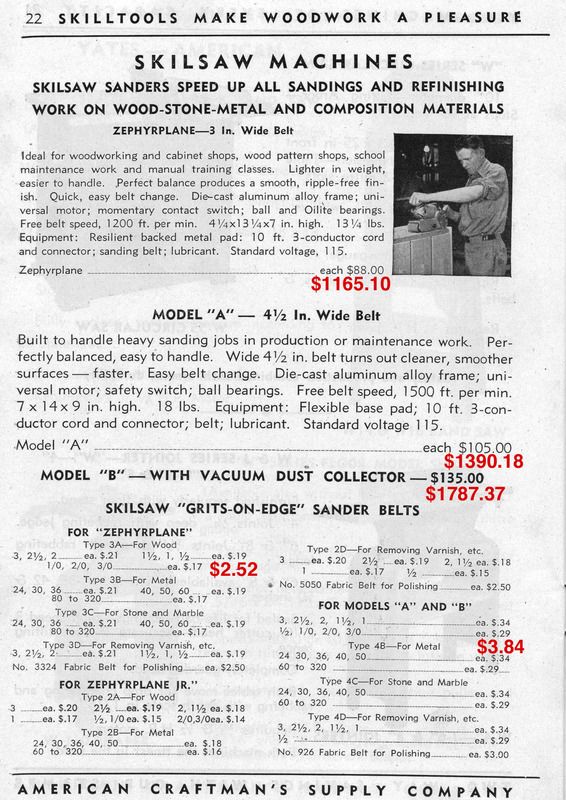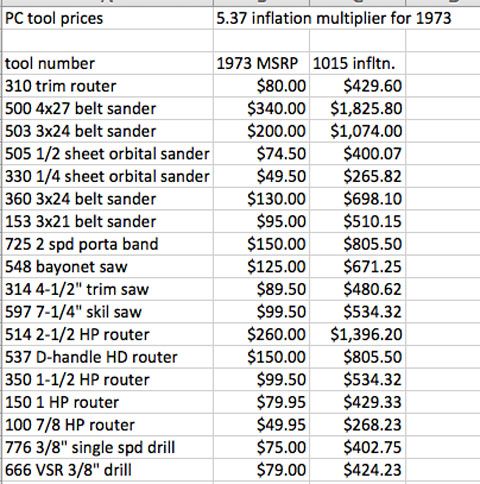While looking through a copy of a 1945 American Craftsman’s Supply Co. catalog, I got to thinking about what it must have been like for a home workshopper to need a portable power tool. I did some inflation calculations and realized that the prices at that time commanded a significant proportion of a person’s disposable income. Even Festool prices can’t compete.
Sure, there are clear reasons why today’s differences exist, but its still amazing that a portable power tool was so expensive. Those drills today, if still working, would bring $5.00 or less at a swap meet. That’s 38¢ in 1945 dollars.


(note: I posted this over at OWWM.org, but thought you guys might get a grin out of this also.)
Sure, there are clear reasons why today’s differences exist, but its still amazing that a portable power tool was so expensive. Those drills today, if still working, would bring $5.00 or less at a swap meet. That’s 38¢ in 1945 dollars.


(note: I posted this over at OWWM.org, but thought you guys might get a grin out of this also.)

